CLICK HERE TO VIEW THIS ON GRANMA

REFLECTIONS OF FIDEL
MINUSTAH and the epidemic
Taken from CubaDebate
APPROXIMATELY three weeks ago news and footage came in of Haitian citizens throwing stones and angrily protesting against the forces of the MINUSTAH, accusing it of having transmitted cholera to that country via a Nepalese soldier.
The initial impression, if one did not receive any additional information, is that it was a rumor born from the antipathy that every occupying force provokes.
How could that information be confirmed? Many of us were unaware of the characteristics of cholera and its means of transmission. A few days later, the protests in Haiti ceased and there was no more talk of the matter.
The epidemic followed its inexorable course, and other problems, such as the risks associated with the electoral battle, occupied our time.
Today, reliable and credible news came in concerning what really happened. The Haitian people had more than sufficient reason to express their indignation.
The AFP news agency textually affirmed that: "Last month, the eminent French epidemiologist Renaud Piarroux headed an investigation in Haiti and came to the conclusion that the epidemic was generated by an imported strain, and extended from the Nepalese base" of MINUSTAH.
For its part, another European agency, EFE, reported: "The origin of the disease is to be found in the little town of Mirebalais, in the center of the country, where Nepalese soldiers had based their camp, and it appeared a few days after their arrival, which confirms the origin of the epidemic…"
"To date, the UN mission in Haiti (MINUSTAH) has denied that the epidemic entered via its blue berets."
"…French Dr. Renaud Piarroux, considered one of the principal world specialists in the study of cholera epidemics, leaves no doubt as to the origin of the disease…"
"The French study was ordered by Paris at the request of the Haitian authorities, stated a French diplomatic spokesperson."
"…the appearance of the disease coincides with the arrival of the Nepalese soldiers who, moreover, originate from a country where there is a cholera epidemic.
"There is no other way of explaining such a sudden and fierce eclosion of cholera in a little town of a few dozen inhabitants.
"The report also analyses the form of the propagation of the disease, given that fecal water from the Nepalese camp was draining into the river from which the town’s inhabitants take their water."
As the same agency communicated, the most surprising thing that the UN did was "…to send an investigative mission to the Nepalese camp, which concluded that that could not have been the origin of the epidemic."
In the midst of the destruction wrought by the earthquake, the epidemic and its poverty, Haiti cannot do without an international force which can cooperate with a nation ruined by foreign interventions and transnational exploitation. The UN must not only fulfill its elemental duty of fighting for Haiti’s reconstruction and development, but also that of mobilizing the resources needed to eradicate an epidemic that is threatening to extend to the neighboring Dominican Republic, the Caribbean, Latin America and other similar Asian and African countries.
Why did the UN insist on denying that the MINUSTAH brought the epidemic to the people of Haiti? We are not blaming Nepal, which in the past was a British colony, and whose men were utilized in its colonial wars and are now seeking employment as soldiers.
We made inquiries with the Cuban doctors currently providing services in Haiti and they confirmed to us the news circulated by the abovementioned European news agencies with notable precision.
I will make a brief synthesis of what was communicated to us by Yamila Zayas Nápoles, a specialist in comprehensive general medicine and anesthesiology, director of a medical institution that has eight basic specialties and diagnostic tools from the Cuba-Venezuela project, inaugurated in October 2009 in the urban area of Mirebalais, with 86,000 inhabitants, in the department of Nord.
On Saturday, October 15 three patients were admitted with symptoms of diarrhea and acute dehydration; on Sunday 16th, four were admitted with similar characteristics, but all of them from one family, and they made the decision to isolate them and communicate what had happened to the Medical Mission; surprisingly, on Monday 17th, 28 patients were admitted with similar symptoms.
The Medical Mission immediately sent a group of specialists in epidemiology who took blood, vomit, fecal samples and data, which were sent with urgency to Haiti’s national laboratories.
On October 22, the labs reported that the strain isolated matched to the one prevalent in Asia and Oceania, which is the most severe. The Nepalese unit of the UN blue berets is located on the bank of the Artibonite River, which runs through the little community of Méyè, where the epidemic emerged, and Mirebalais, to which it then rapidly spread.
In spite of the sudden way in which cholera appeared in the small, but excellent hospital in the service of Haiti, only 13 of the first 2,822 sick persons died, giving a mortality rate of 0.5%; subsequently, when the Cholera Treatment Center was set up in a remote area, out of 3,459 patients, five in a serious condition died, giving 0.1%.
The total number of persons suffering from cholera in Haiti rose today, Tuesday, December 7 to 93,222 persons, and the number of patients who have died reached a total of 2,120. Among those treated by the Cuban Mission the mortality rate rose to 0.83%. The mortality rate in other hospital institutions stands at 3.2%. With the experience acquired, appropriate measures and the reinforcement of the Henry Reeve Brigade, the Cuban Medical Mission, with the support of the Haitian authorities, has offered a presence in many of the isolated 207 sub-communes, so that no Haitian citizen lacks medical attention in the face of the epidemic, and many thousands of lives can be saved.

Fidel Castro Ruz
December 7, 2010
6:34 p.m.
Translated by Granma International
















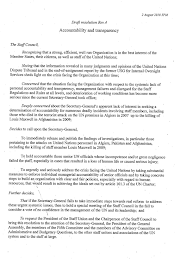

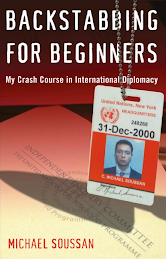
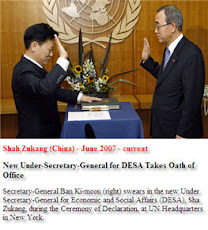
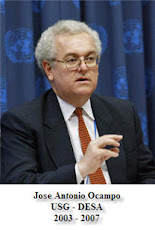
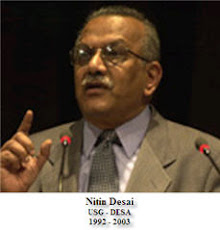
No comments:
Post a Comment